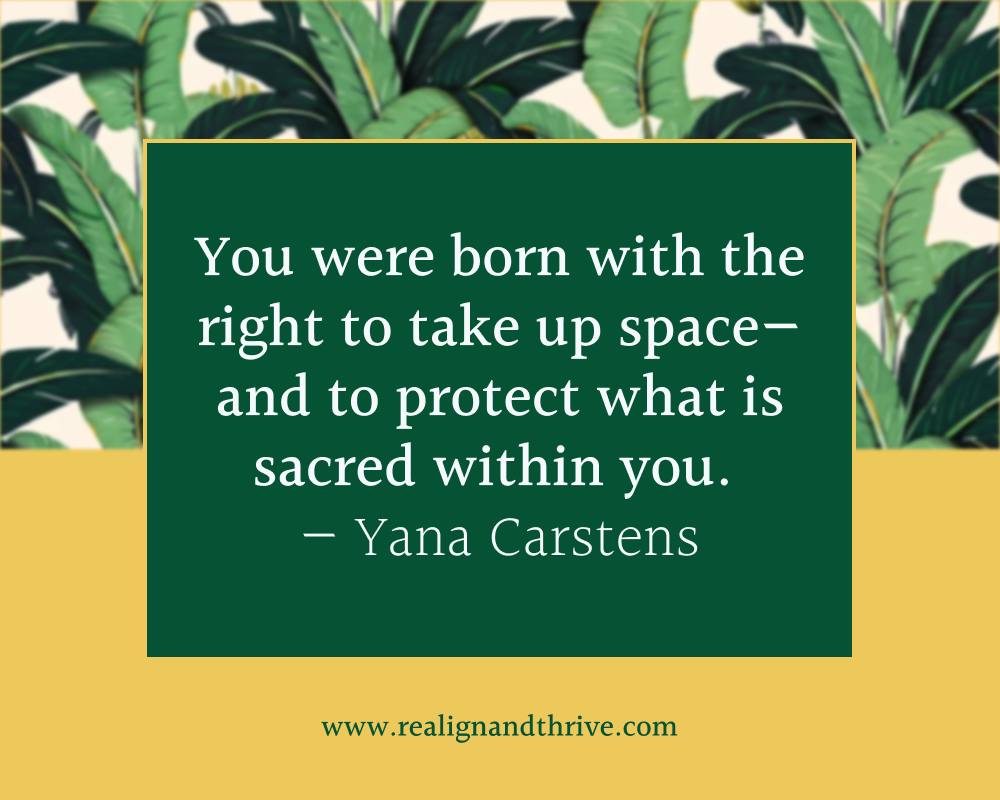Why Boundaries Are So Hard (And Why They Set You Free)

You Were Never Meant to Be Boundaryless
For most of my life, I didn’t know I was allowed to have boundaries.
I thought being kind meant being agreeable.
That a show of love meant sacrifice.
That faith meant obedience to others’ interpretations—even when it conflicted with my own knowing.
Setting boundaries felt selfish. Rebellious. The bad girl attitude.
But the truth is: boundaries aren’t bitchy, bad, bold but beautiful.
They’re the space in which understanding and connection can grow—and authenticity can flow.
Why Boundaries Are So Hard
1. Because we weren’t taught them
Many of us grew up in families where boundaries were either punished or ignored.
We were taught to be “good,” “quiet,” “helpful,” “easy to manage.”
Our “yes” was praised. Our “no” was questioned—often indirectly.
We learned to merge, please, perform… or disappear.
2. Because society doesn’t reward them
In many cultures and faith traditions, boundaries are mistaken for pride.
In workplaces, they're seen as laziness.
In relationships, they’re misunderstood as disconnection.
And so we stay boundaryless—not because we want to be, but because it feels safer.
It feels connective.
3. Because our nervous system links them to danger
When saying “no” or expressing a preference has led to rejection or punishment—especially as a child—our bodies remember.
Setting a boundary doesn’t just feel hard. It can feel life-threatening.
Until we create new evidence, our nervous system defaults to what it learned was safest: self-abandonment.
What Happens When Boundaries Are Missing
Without boundaries, you become porous.
Anything can come in—the good and the bad.
You absorb others’ emotions, expectations, and energy without a filtering system.
You say “yes” when your body says “no,” and over time, that dissonance becomes self-betrayal.
You live out stories that aren’t yours. You internalize others’ beliefs.
And slowly… you begin to disappear.
This is why so many kind, high-achieving, spiritually attuned people end up burned out, resentful, or confused.
They give, do, and create so much… they forget themselves.
They try all the “right” things. But forget the path back to themselves.
The Arc of Boundary Development
There is a path to embracing and embodying healthy internal and external boundaries.
It often moves through these four stages:
1. Over-Accommodation
“I don’t want to upset anyone.”
You abandon yourself to stay connected.
You perform to be accepted.
You override your needs out of fear.
This often leads to burnout or emotional depletion.
2. Overcorrection
“I’m done. No one gets in.”
Once you’ve been violated enough, you swing into protection mode.
Walls go up. You start saying no—maybe aggressively.
It’s necessary… but not sustainable.
3. Conscious Practice
“I’m learning what feels aligned to me.”
This is the messy, beautiful middle.
You try. You fail. You reframe.
You learn to say no with grace, and yes with intention.
You begin to trust your gut again.
4. Embodiment
“Boundaries are natural.”
You don’t need to defend or over-explain.
Your presence speaks for you.
Your boundaries are not rigid—they’re resonant.
They feel like aura, not armor.
What Good Boundaries Are Made Of
Healthy internal boundaries come from:
-
Emotional awareness
-
Self-trust
-
Permission to matter
-
Spiritual discernment
Healthy external boundaries come from:
-
Clear identity
-
Safe modeling
-
Practice
-
Respect
Let’s Affirm the Truth:
My needs are not a burden.
My voice is not rebellion.
My “no” is not a sin.
My inner knowing is sacred.
My boundaries are not selfish—they are sacred.
You don’t need to disappear to belong.
You were born with the right to take up space—
and to protect what is sacred within you.
Also published on Substack: Realign & Thrive